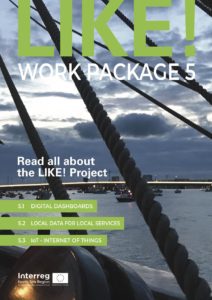Why ‘Digital DNA’ for cities?
Everywhere is different – but historically cities have struggled to understand the makeup of neighbourhoods and how different areas need different services and delivery approaches.
Like!’s focus on the local Digital DNA of communities has enabled the proect to develop new ways for cities and communities to use data to understand citizens – both to design and then deliver better services, and to help managers and politicians and stakeholders to use data to help make better policy decisions for communities.
The general learning from Like! is designed to be platform agnostic – focusing on what these tools mean for communities, for service design and for service delivery – rather than on the technical details of developing or managing different platforms.
Key ‘Digital DNA’ themes:
- The ‘Digital dashboards’ pilots used a range of platforms to build dashboards that visualised data on maps, combined existing data from multiple sources (e.g. social media, data on communities and neighbourhoods, budgets) and provided customised analyses of services and neighbourhood performance. Like! brought together local governments, citizens and SMEs to collaborate to develop outputs targeted to key groups in each area, combining information and open data to provide new insights into community needs and service delivery.
- The ‘local data for local services’ work brought together governments, community organisations and citizens, and used a combination of local, neighbourhood, regional and national data and information to build tools to help citizens, policy makers and stakeholders understand the detail behind local issues and values. This information was then used in service (re)design and delivery and in the development of new approaches to tackling local problems.
- The ‘Internet of Things’ work explored how sensors can be used to deliver better understanding of neighbourhoods and how sensors can help deliver better services and information. Partners combined meetings, workshops and hackathons to engage SMEs, citizens and other interested organisations to understand the potential of these new technologies and to identify and develop use cases in their communities.
There are strong links between these Digital DNA themes and those in the other LIKE! work packages on ‘Creating a Local Digital Innovation Culture’ and ‘Developing Smarter Services’.
